
Francis and I nerded out with the historic walking tour yesterday, but that will be part two (and maybe three) of this series. My Grandma gave me the walking tour map, but if you are interested, I believe you can pick them up at the office. The office is open for inquiries seven days a week, from 8-4:30.
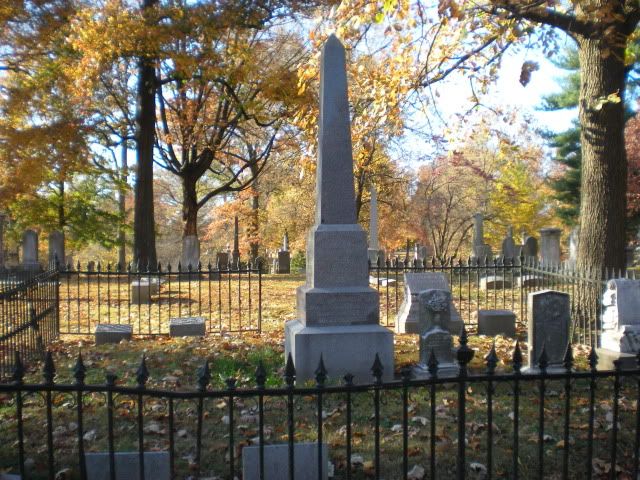
Today we're just going to talk about the history of the cemetery and touch on a few interesting sites that aren't on the walking tour. Bellefontaine Cemetery was founded in 1849 and was the first rural cemetery west of the Mississippi. Rural cemeteries were designed to be park-like, outside the hustle and bustle of the city, as well as open and accessible to all, regardless of race, religion, or class.
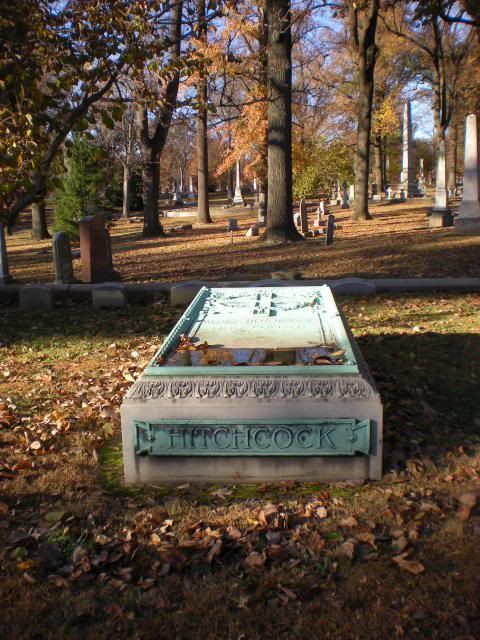
Many St Louisans will tell you that Bellefontaine is a beautiful place to visit in the fall, but what they may not realize is the reason the fall color is so striking here. Up until the mid-20th century, the cemetery had more variety than the Missouri Botannical Garden. According to their excellent website, they currently have 4,181 plants and 4,173 trees, representing 155 species! The picture below is the spot where I realized exactly how many different trees I was seeing at one time. I wish I could have gotten even more of the view into this picture, because it is pretty spectacular.
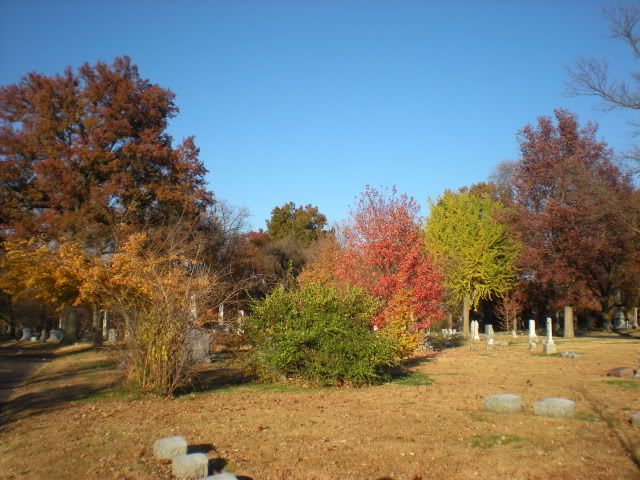
Many of the most famous mausoleums are along the river bluff on the Broadway side of the cemetery. We'll talk about those in more detail in a later post. Here I should also mention that the Lemp Reality Tour is granted access to the Lemp Mausoleum. You can bet I will be taking that tour when they start up again in the spring.
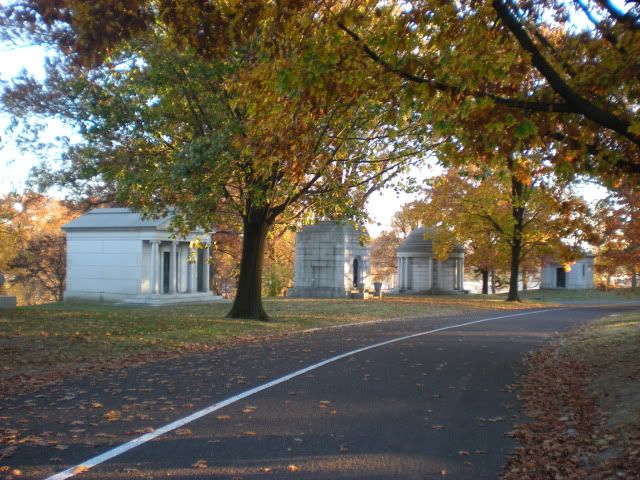
The Paramore mausoleum, which is neither on the bluff nor on the walking tour, was my favorite by far. It's the only one I saw that didn't have a door or bricked up entrance.
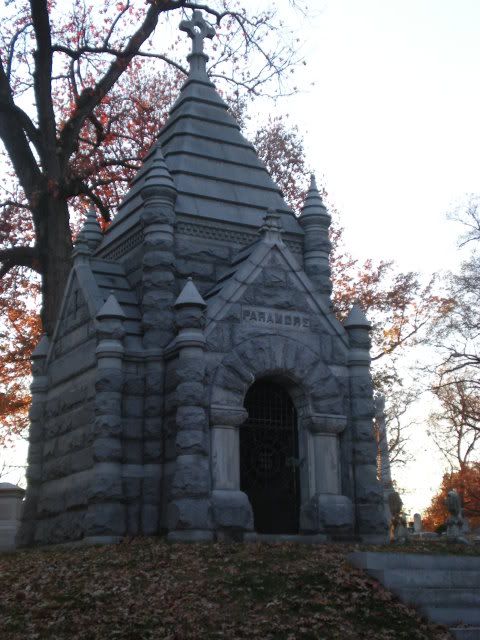
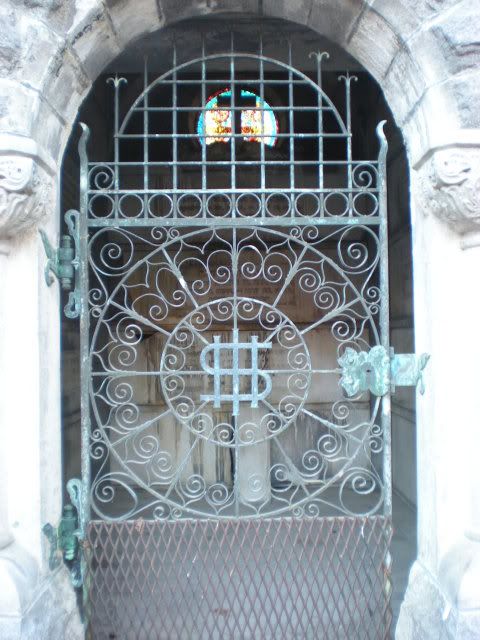
We saw the symbol on the gate quite a few times throughout the cemetery. I learned from Graveaddiction.com that it is not a dollar sign (which would have been awesome), but rather the letters IHS. Some people say these are the first three letters of Jesus's name in Greek, some say it stands for the Latin phrase "in hoc signo", which means "by this sign we conquer".
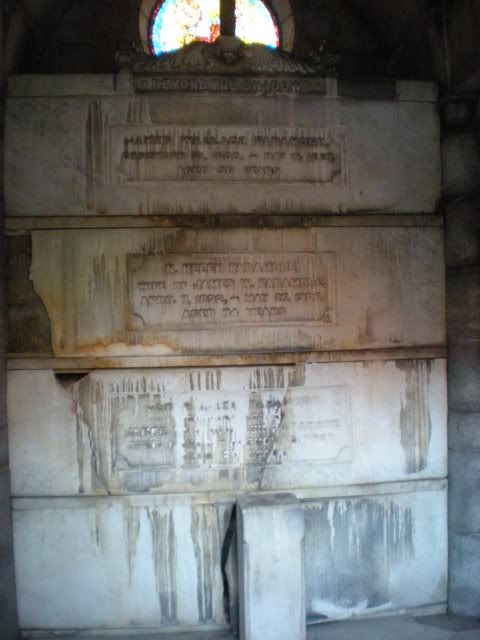
Another striking characteristic of Bellefontaine, and one I am at a loss to explain, is the style of tomb seen below. At the risk of sounding irreverent, we were calling them hobbit houses, but they do look like sod houses. Some have doors, but some are just bricked up, which reminded me a bit too much of The Cask of Amontillado.
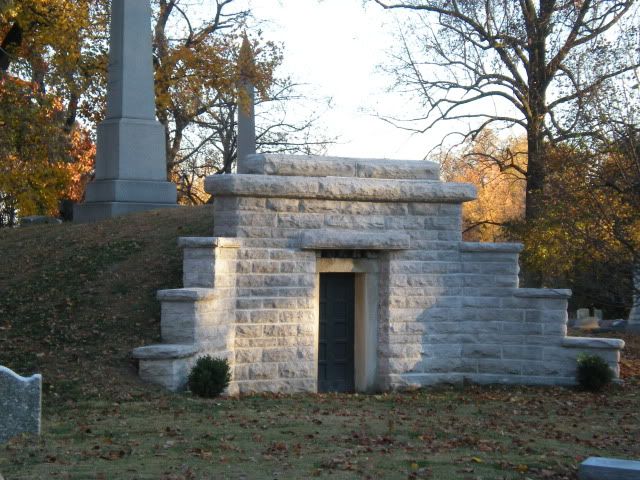
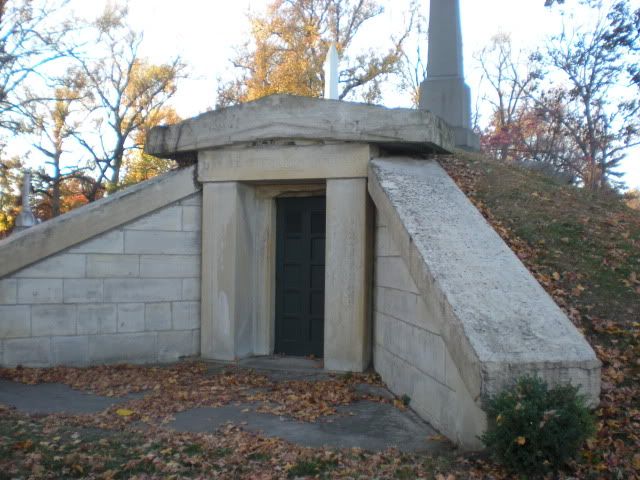
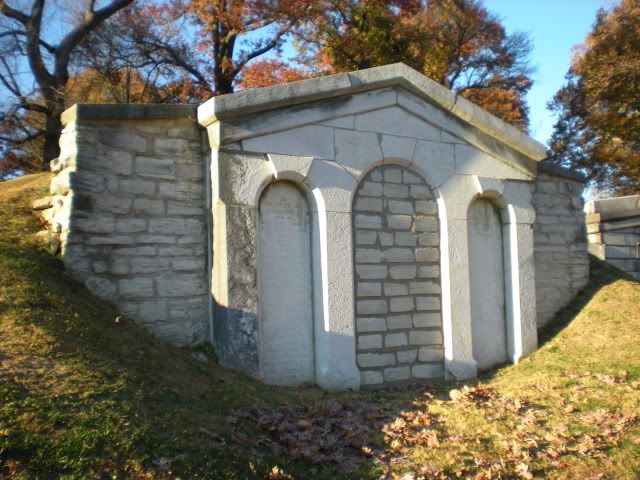
This last one is particularly interesting. It has that sunken path, is bricked up, and has a gate. I would be extremely interested in any details my readers can provide for reasoning behind any of the characteristics of this style of tomb, particularly how the interior details may differ from an above-ground mausoleum.
EDIT: I did find out that this is called a tumulus. I still want oral history kind of detail, rather than a wiki page, so make with the comments.

This is one of my very favorite things about exploring cemeteries. Every once in awhile, a marker will catch my eye and make me say, "Wow, I wonder who this person was." I joke that this is why I believe in elaborate and ostentatious grave markers, because it makes people wonder who you were long after you're gone.
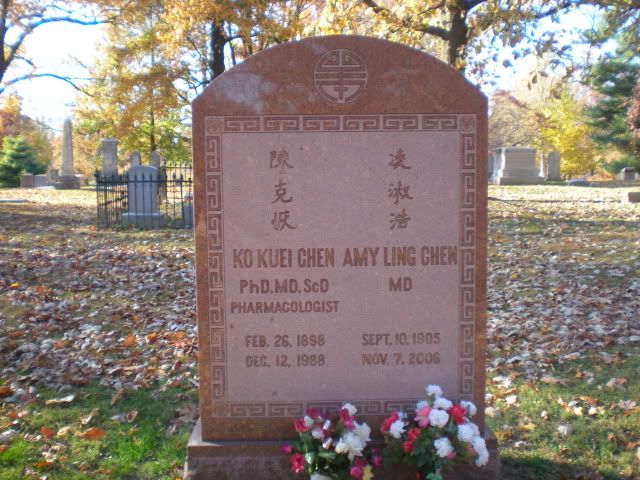
In this case, we remarked on the fact that this husband and wife, Ko Kuei Chen and Amy Ling Chen, were both Chinese doctors, lived a very long time, and must have had an interesting life. As it turns out, they were very famous doctors, and wrote over 150 articles together. K.K. Chen was the Director of Pharmacological Research at Eli Lilly for 34 years, but it is Amy Ling Chen's story that is absolutely fascinating. Too much detail for this blog, so you can read about her here, or in the book her granddaughter wrote, A Thousand Miles of Dreams: The Journeys of Two Chinese Sisters
A few more interesting grave sites:
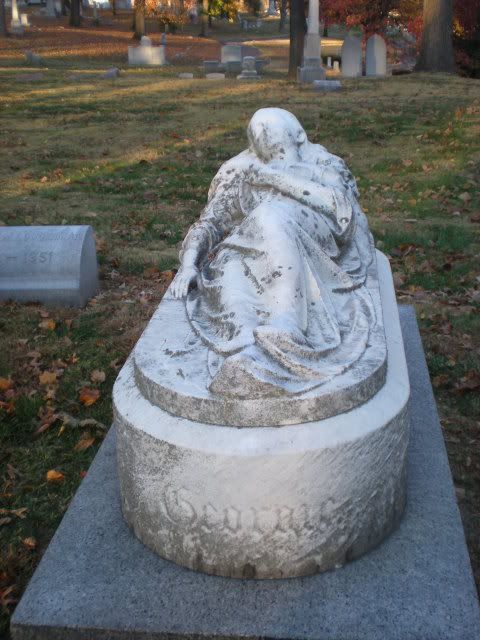
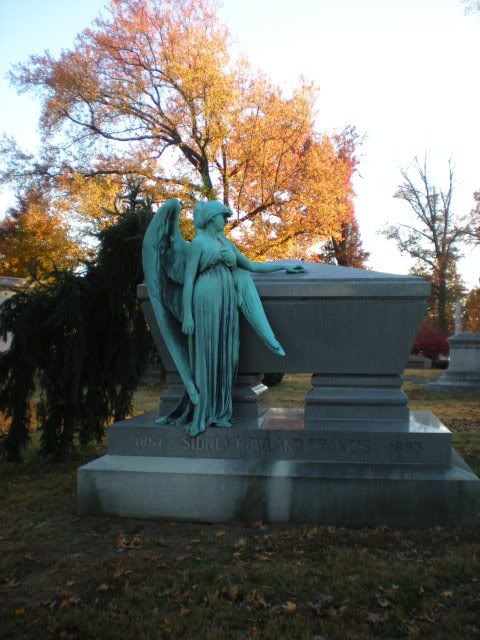
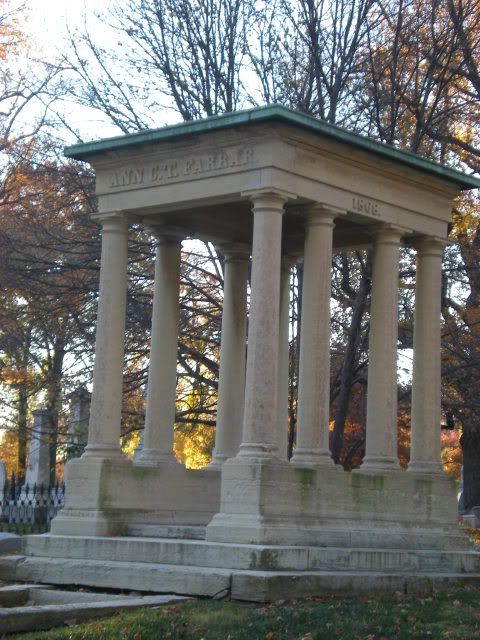
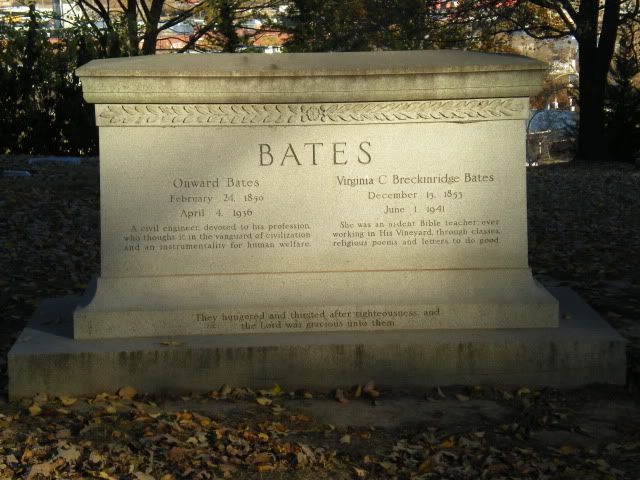
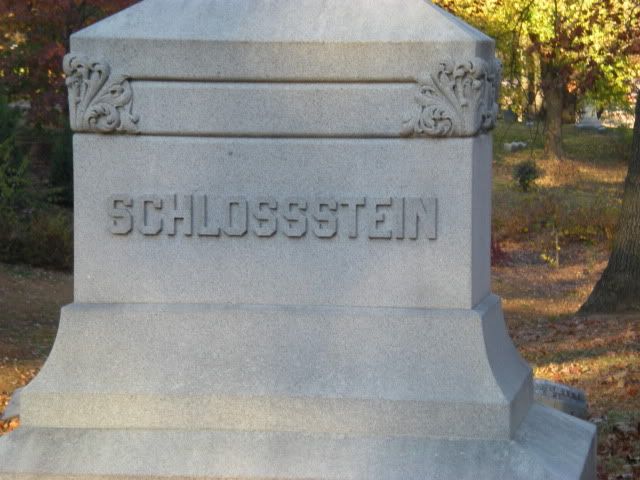
Originally 138 acres, Bellefontaine now covers 314 acres, has 14 miles of road, and two lakes. It was designed to be a part of the community, and to this day, the Cemetery Association works with area community organizations to improve their neighborhood and plan future development of the surrounding areas so that Bellefontaine Cemetery will always be a lovely and educational place to visit. I encourage you to visit their absolutely peerless website for more information, as well as details on the many types of tours they offer.

C O O O O O O O L ! ! !
ReplyDelete